

Grenada
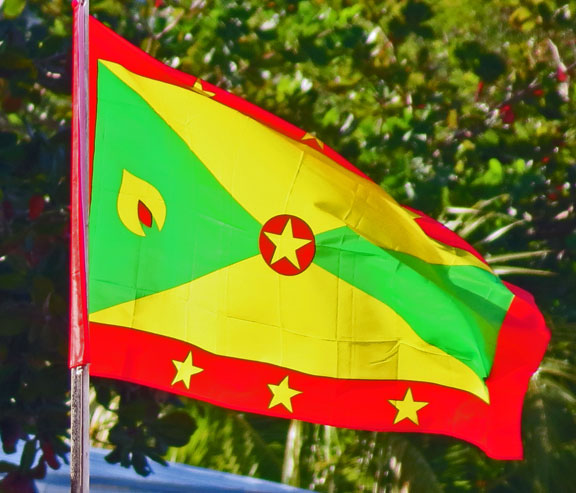
flag
Grenada is an island country and Commonwealth Realm consisting of the island of Grenada and six smaller islands at the southern end of the Grenadines in the southeastern Caribbean Sea. Grenada is located northwest of Trinidad and Tobago, northeast of Venezuela, and southwest of Saint Vincent and the Grenadines.
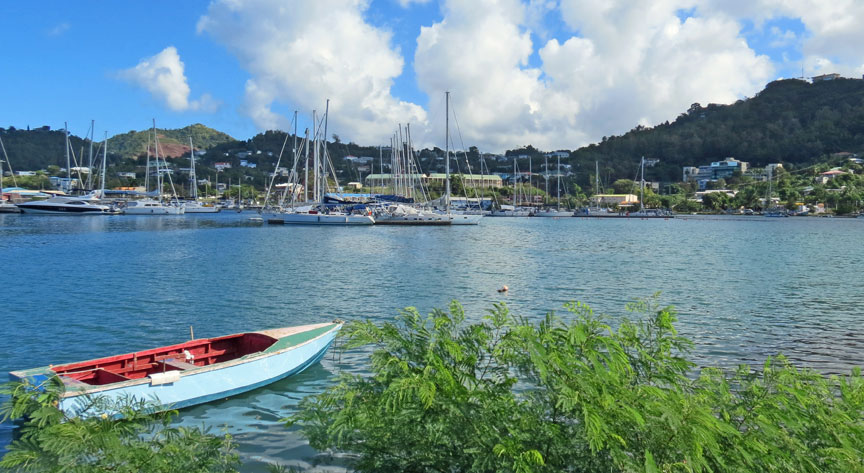
St. Louis harbor
Grenada is also known as the "Island of Spice" due to the production of nutmeg and mace crops of which Grenada is one of the world's largest exporters. Its size is 344 square kilometers (133 sq mi), with an estimated population of 110,000. Its capital is St. George's. The national bird of Grenada is the critically endangered Grenada Dove.
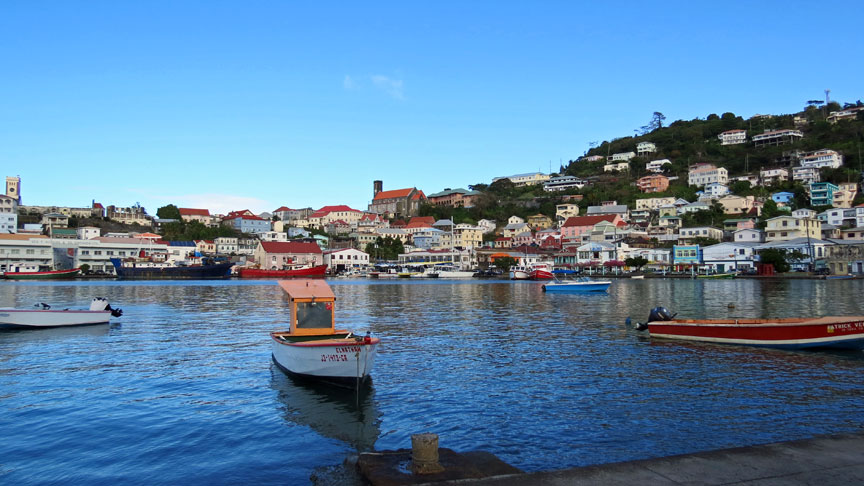
St. George's
Grenada was first sighted by Europeans in 1498 during the 3rd voyage of Columbus to the new world. At the time the indigenous Island Caribs (Kalinago) who lived there called it Camahogne. The Spaniards did not permanently settle on Camahogne. The English failed in their attempt at settlement in 1609.
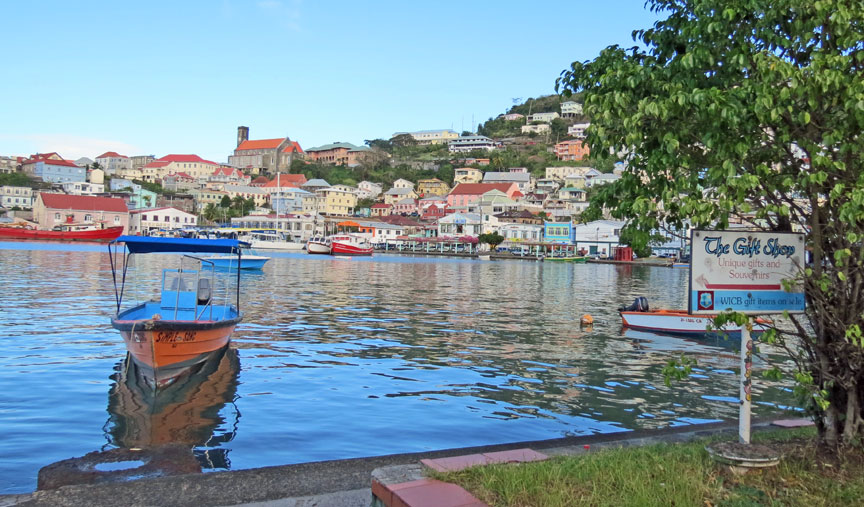
On March 17, 1649 a French expedition of 203 men from Martinique, led by Jacques
du Parquet founded a permanent settlement on Grenada. Within months this led to
conflict with the local islanders which lasted until 1654 when the Island was
completely subjugated by the French. Those indigineous islanders who survived
either left for neighbouring islands or retreated to remoter parts of Grenada
where they were marginalised – the last distinct communities disappeared during
the eighteenth century. Warfare did continue during the seventeenth century
between the French on Grenada and the Caribs of present day Dominica and St.
Vincent and the Grenadines. The French named the new French colony La Grenade and
the economy was initially based on sugar and indigo. The French established a
capital known as Fort Royal (later St. George). To shelter from hurricanes the
French navy would often take refuge in the capital's natural harbor, as no
nearby French islands had a natural harbor to compare with that of Fort Royal.
The British captured Grenada during the Seven Years' War in 1762.

Grenada was formally ceded to Britain by the Treaty of Paris in 1763. The French
re-captured the island during the American War of Independence, after Comte
d'Estaing won the bloody land and naval Battle of Grenada in July 1779. However
the island was restored to Britain with the Treaty of Versailles in 1783.
Britain was hard pressed to overcome a pro-French revolt in 1795–1796 led by
Julien Fedon. Nutmeg was introduced to Grenada in 1843 when a merchant ship
called in on its way to England from the East Indies. The ship had a small
quantity of nutmeg trees on board which they left in Grenada and this was the
beginning of Grenada's nutmeg industry that now supplies nearly forty percent of
the world's annual crop. In 1877 Grenada was made a Crown Colony. Theophilus A.
Marryshow founded the Representative Government Association (RGA) in 1917 to
agitate for a new and participative constitutional dispensation for the
Grenadian people. Partly as a result of Marryshow`s lobbying the Wood Commission
of 1921–1922 concluded that Grenada was ready for constitutional reform in the
form of a 'modified' Crown Colony government. This modification granted
Grenadians from 1925 the right to elect 5 of the 15 members of the Legislative
Council, on a restricted property franchise enabling the wealthiest 4% of adult
Grenadians to vote.
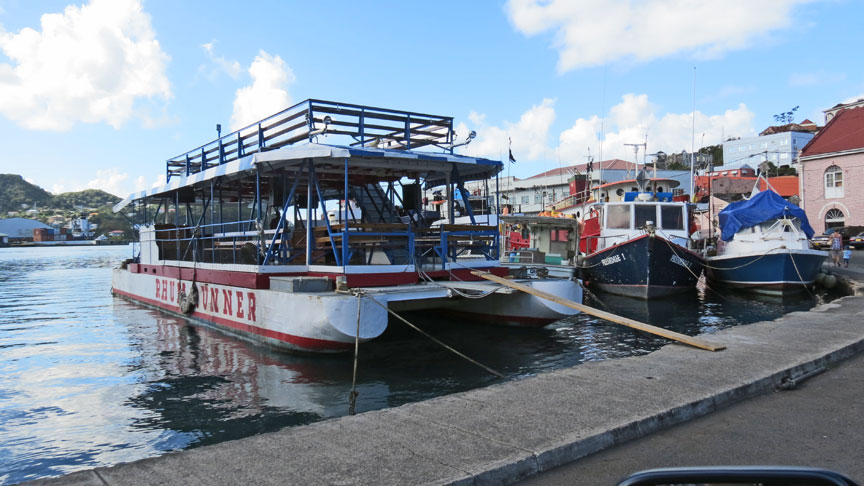
In 1950 Eric Gairy founded the Grenada United Labour Party, initially as a
trades union, which led the 1951 general strike for better working conditions,
this sparked great unrest – so many buildings were set ablaze that the
disturbances became known as the 'red sky' days – and the British authorities
had to call in military reinforcements to help regain control of the situation.
On October 10, 1951 Grenada held its first general elections on the basis of
universal adult suffrage - Eric Gairy's Grenada United Labour Party won 6 of the
8 seats contested. From 1958 to 1962 Grenada was part of the Federation of the
West Indies.
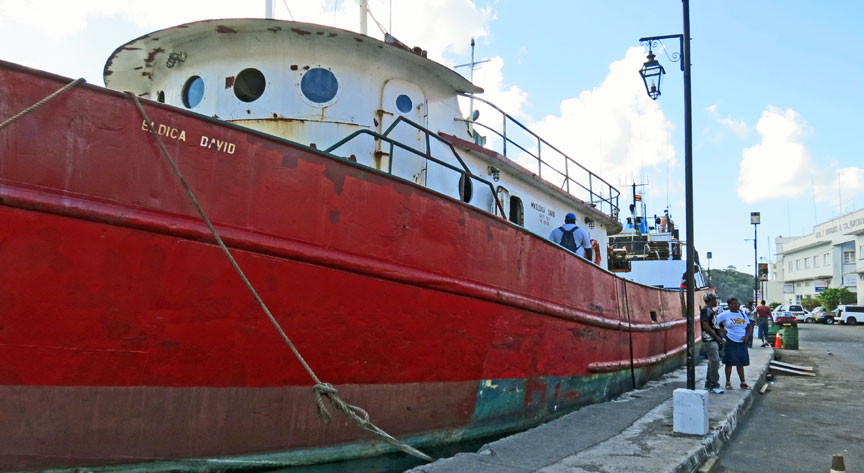
On March 3, 1967 Grenada was granted full autonomy over its internal affairs as
an Associated State. Herbert Blaize was the first Premier of the Associated
State of Grenada fom March to August 1967. Eric Gairy served as Premier from
August 1967 until February 1974.
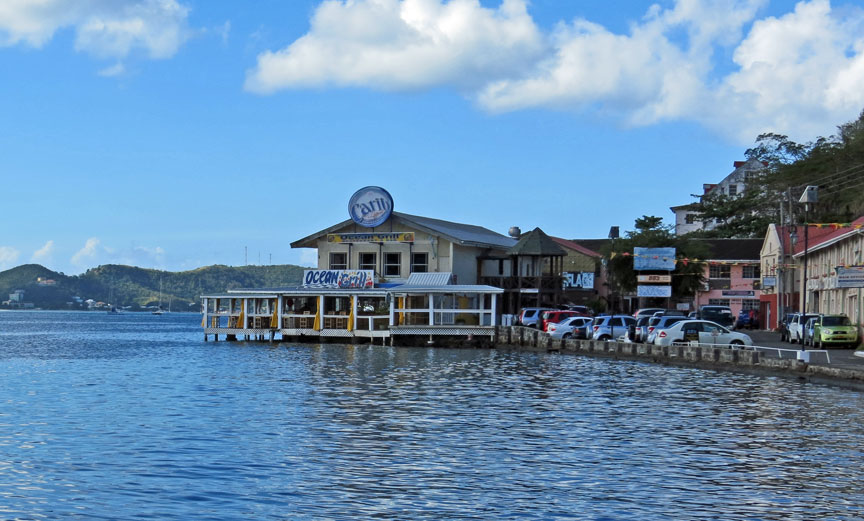
Ocean Grill
Independence was granted in 1974 under the leadership of the then Premier, Sir Eric Matthew Gairy, who became the first Prime Minister of Grenada.
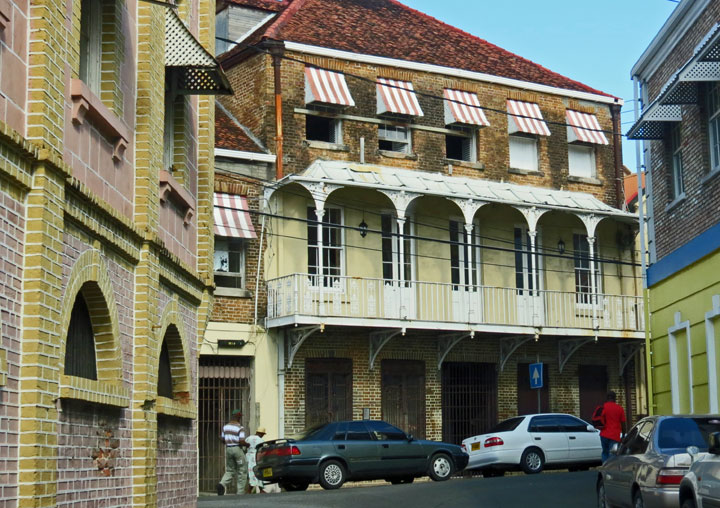
Civil conflict gradually broke out between Eric Gairy’s government and some
opposition parties including the New Jewel Movement (NJM). Gairy’s party won
elections in 1976 but the opposition did not accept the result, accusing it of
fraud. In 1979, the New Jewel Movement under Maurice Bishop launched a
paramilitary attack on the government resulting in its overthrow.

The constitution was suspended and Bishop's "People's Revolutionary Government"
ruled subsequently by decree. Cuban doctors, teachers, and technicians were
invited in to help develop health, literacy, and agriculture over the next few
years. Agrarian reforms started by the Gairy government were continued and
greatly expanded under the revolutionary government of Maurice Bishop.

Some years later a dispute developed between Bishop and certain high-ranking
members of the NJM. Though Bishop cooperated with Cuba and the USSR on various
trade and foreign policy issues, he sought to maintain a "non-aligned" status.
Bishop had been taking his time making Grenada wholly socialist, encouraging
private-sector development in an attempt to make the island a popular tourist
destination. Hardline Marxist party members, including Communist Deputy Prime
Minister Bernard Coard, deemed Bishop insufficiently revolutionary and demanded
that he either step down or enter into a power-sharing arrangement.
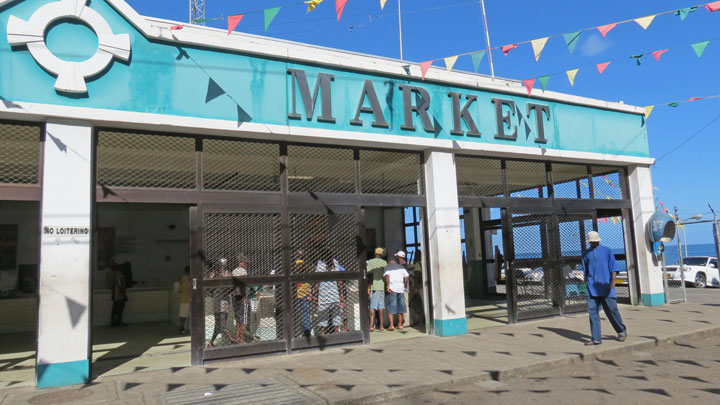
fish market
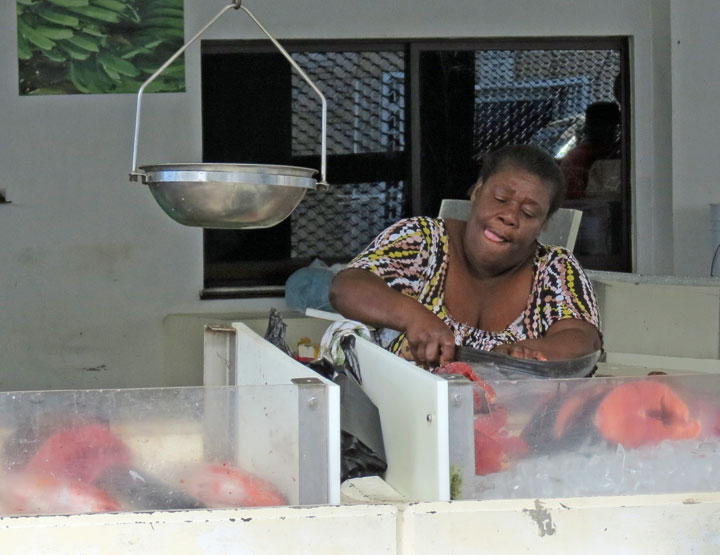
On October 19, 1983, Bernard Coard and his wife Phyllis, backed by the Grenadian Army, led a coup against the government of Maurice Bishop and placed Bishop under house arrest. These actions led to street demonstrations in various parts of the island. Bishop had enough support from the population that he was eventually freed after a demonstration in the capital. When Bishop attempted to resume power, he was captured and executed by soldiers along with seven others, including government cabinet ministers. The Coard regime then put the island under martial law.

After the execution of Bishop, the People's Revolutionary Army formed a military
government with General Hudson Austin as chairman. The army declared a four-day
total curfew, during which (it said) anyone leaving their home without approval
would be shot on sight.
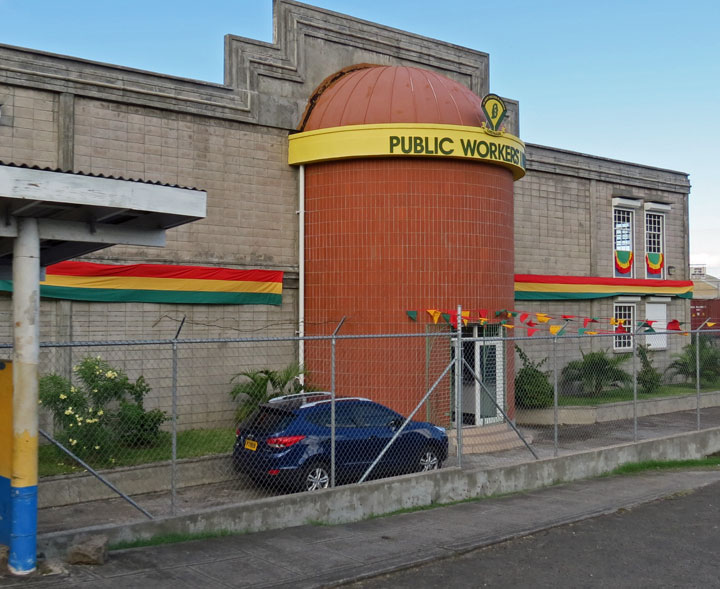
Public Workers Union
The overthrow of a moderate government by one which was strongly pro-communist worried U.S. President Ronald Reagan. Particularly concerning was the presence of Cuban construction workers and military personnel who were building a 10,000-foot (3,000 m) airstrip on Grenada. Bishop had stated the purpose of the airstrip was to allow commercial jets to land, but U.S. military analysts argued that the only reason for constructing such a long and reinforced runway was so that it could be used by heavy military transport planes. The contractors, American and European companies, and the EEC, which provided partial funding, all claimed the airstrip did not have military capabilities. Reagan was worried that Cuba – under the direction of the Soviet Union – would use Grenada as a refueling stop for Cuban and Soviet airplanes loaded with weapons destined for Central American communist insurgents.
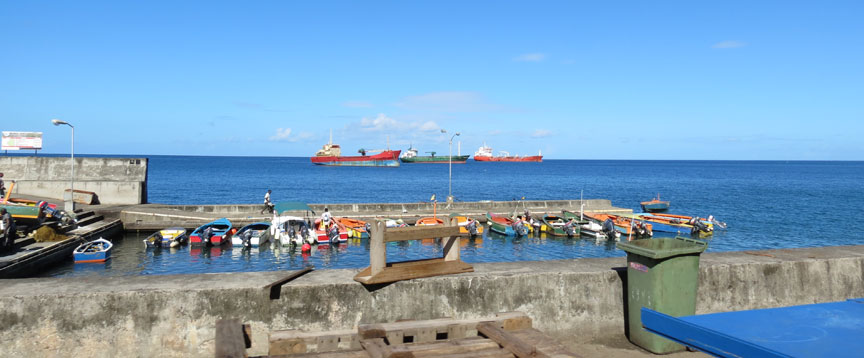
On October 25 combined forces from the United States and from the Regional
Security System (RSS) based in Barbados invaded Grenada in an operation
codenamed Operation Urgent Fury. The U.S. stated this was done at the behest of
Dame Eugenia Charles, of Dominica. While the Governor-General, Sir Paul Scoon,
later stated that he had also requested the invasion, it was highly criticised
by head of state HM Queen Elizabeth II and the governments of Britain, Trinidad
and Tobago and Canada. The United Nations General Assembly condemned it as "a
flagrant violation of international law" by a vote of 108 in favor to 9, with 27
abstentions. The United Nations Security Council considered a similar
resolution, which failed to pass when vetoed by the United States.

"bus" leaving the bus terminal
After the invasion of the island nation, the pre-revolutionary Grenadian constitution came into operation once again. Eighteen members of the PRG and the PRA (army) were arrested after the invasion on charges related to the murder of Maurice Bishop and seven others. The eighteen included the top political leadership of Grenada at the time of the execution as well as the entire military chain of command directly responsible for the operation that led to the executions. Fourteen were sentenced to death, one was found not guilty and three were sentenced to forty-five years in prison. The death sentences were eventually commuted to terms of imprisonment. Those in prison have become known as the Grenada 17.

When US troops withdrew from Grenada in December 1983 Nicholas Brathwaite of the
National Democratic Congress was appointed Prime Minister of an interim
administration by the Governor General Sir Paul Scoon until elections could be
organized. The first democratic elections since 1976 were held in December 1984
and were won by the Grenada National Party under Herbert Blaize who served as
Prime Minister until his death in December 1989. Ben Jones succeeded Blaize as
Prime Minister and served until the March 1990 election, which was won by the
National Democratic Congress under Nicholas Brathwaite who returned as Prime
Minister for a second time until he resigned in February 1995. He was succeeded
as Prime Minister by George Brizan who served until the June 1995 election which
was won by the New National Party under Keith Mitchell who went on to win the
1999 and 2003 elections and served as Prime Minister for a record 13 years until
2008.
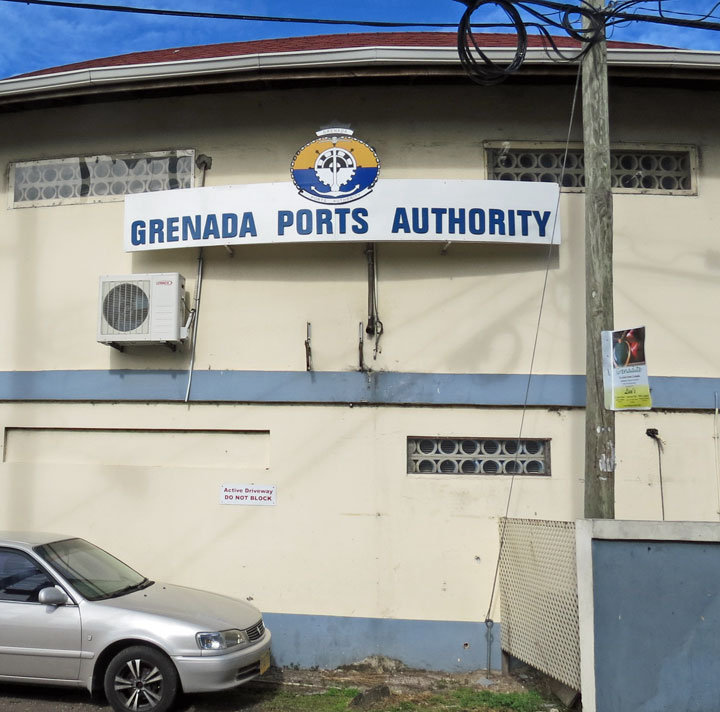
In 2000–2002, much of the controversy of the late 1970s and early 1980s was once
again brought into the public consciousness with the opening of the truth and
reconciliation commission. The commission was chaired by a Roman Catholic
priest, Father Mark Haynes, and was tasked with uncovering injustices arising
from the PRA, Bishop’s regime, and before. It held a number of hearings around
the country. Brother Robert Fanovich, head of Presentation Brothers’ College (PBC)
in St. George’s tasked some of his senior students with conducting a research
project into the era and specifically into the fact that Maurice Bishop’s body
was never discovered. See Maurice Paterson's book, published before this event,
called Big Sky Little Bullet. Paterson also uncovered that there was still a lot
of resentment in Grenadian society resulting from the era, and a feeling that
there were many injustices still unaddressed.
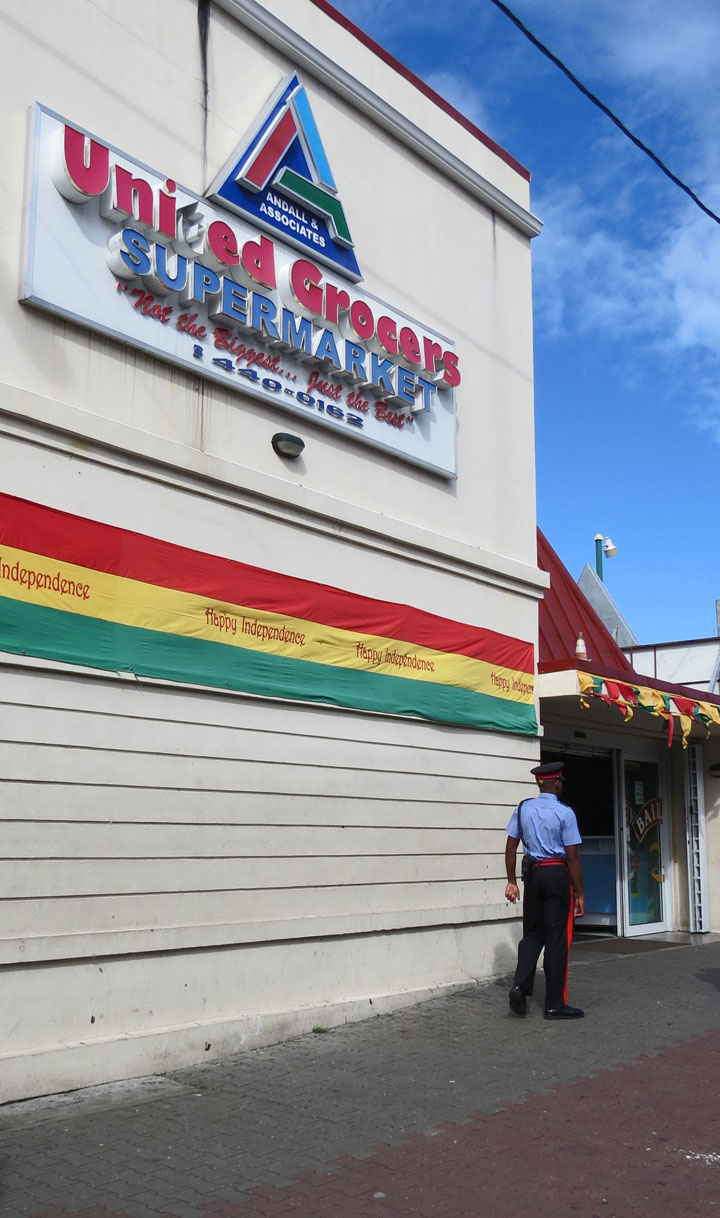
In 2004, after being hurricane-free for forty-nine years, the island was
directly hit by Hurricane Ivan (September 7). Ivan struck as a Category 3
hurricane and caused 90 percent of the homes to be damaged or destroyed. The
following year, 2005, Hurricane Emily (July 14), a Category 1 hurricane at the
time, struck the northern part of the island with 80-knot (150 km/h; 92 mph)
winds, causing an estimated USD $110 million (EC$ 297 million) worth of damage.
This was much less damage than Ivan had caused.[citation needed] Grenada
recovered due to both domestic labor and financing from the world at large, and
the work done by the New National Party Administration of Dr. Keith Mitchell and
his team. By December 2005, 96% of all hotel rooms were to be open for business
and to have been upgraded in facilities and strengthened to an improved building
code.[citation needed] The agricultural industry and in particular the nutmeg
industry suffered serious losses, but that event has begun changes in crop
management and it is hoped that as new nutmeg trees gradually mature, the
industry will return to its pre-Ivan position as a major supplier in the Western
world.
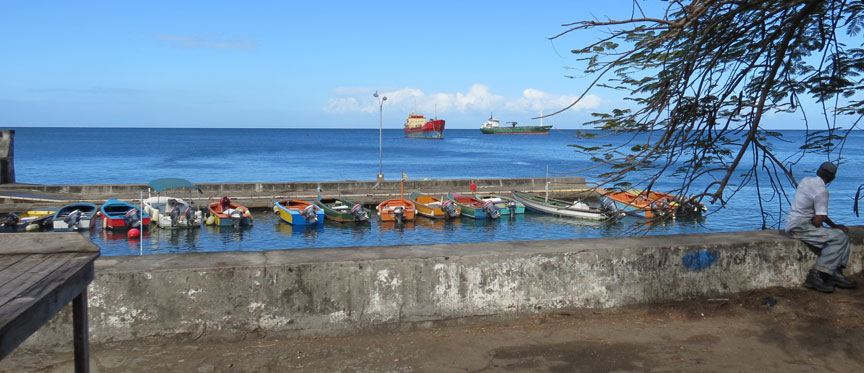
In April 2007, Grenada jointly hosted (along with several other Caribbean
nations) the 2007 Cricket World Cup. The island's then Prime Minister was at the
time CARICOM Representative on cricket and was instrumental in having the World
Cup Games brought to the region. After Hurricane Ivan, the government of the
People's Republic of China (PRC) paid for the new $40 million national stadium,
and provided the aid of over 300 laborers to build and repair it. During the
opening ceremony, the anthem of the Republic of China (ROC, Taiwan) was
accidentally played instead of the PRC's anthem, leading to the firing of top
officials.
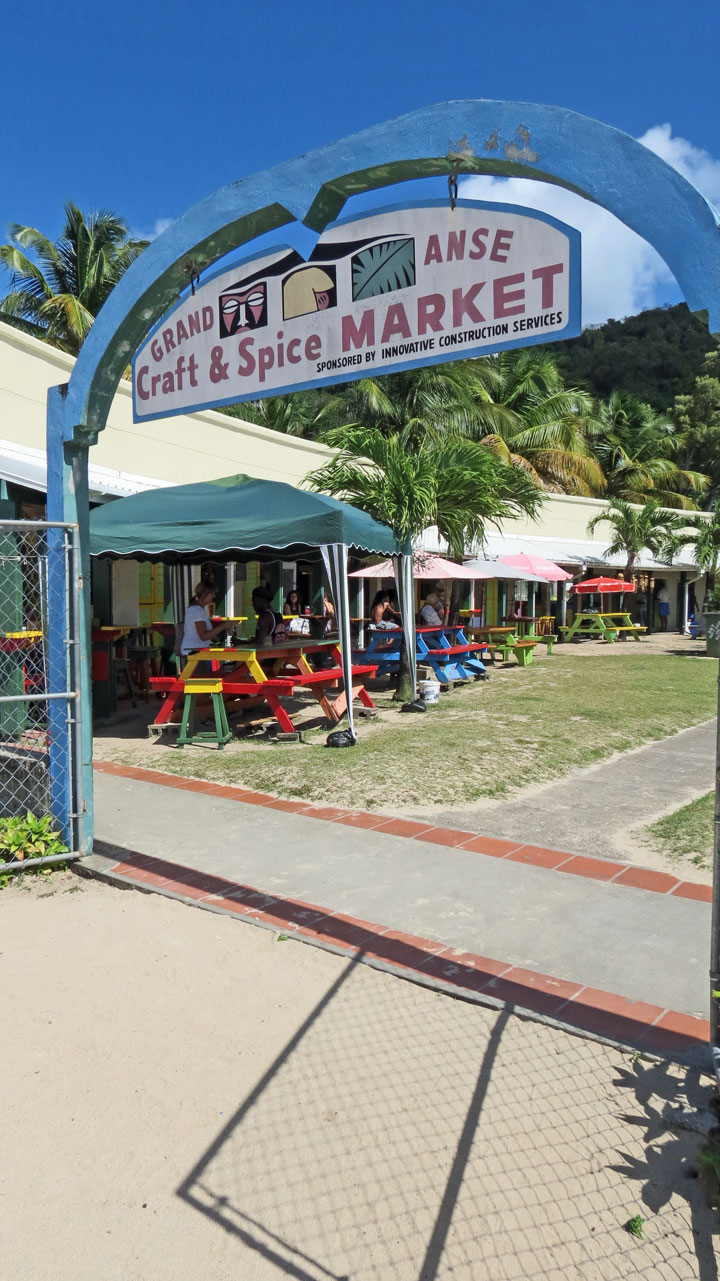
The 2008 election was won by the National Democratic Congress under Tillman
Thomas.
Text from Wikipedia
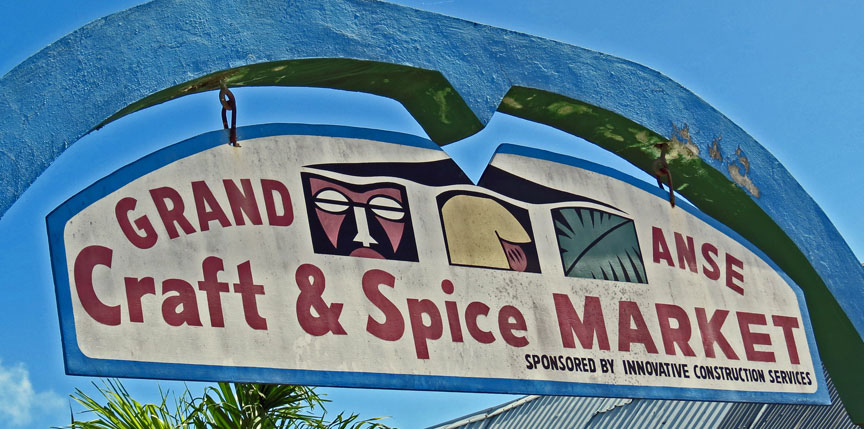

Anse Beach
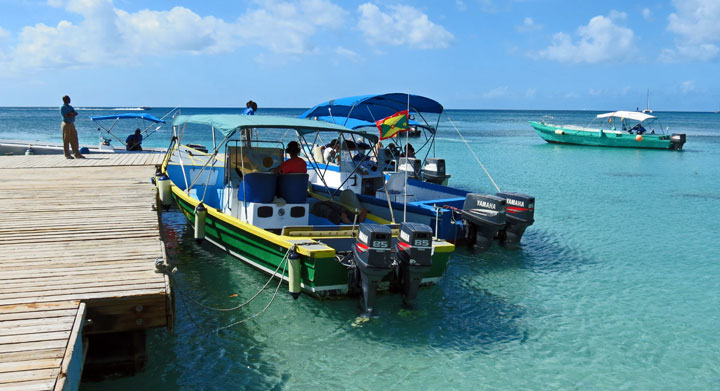
water taxis bringing people to the beach from the Cruise Terminal
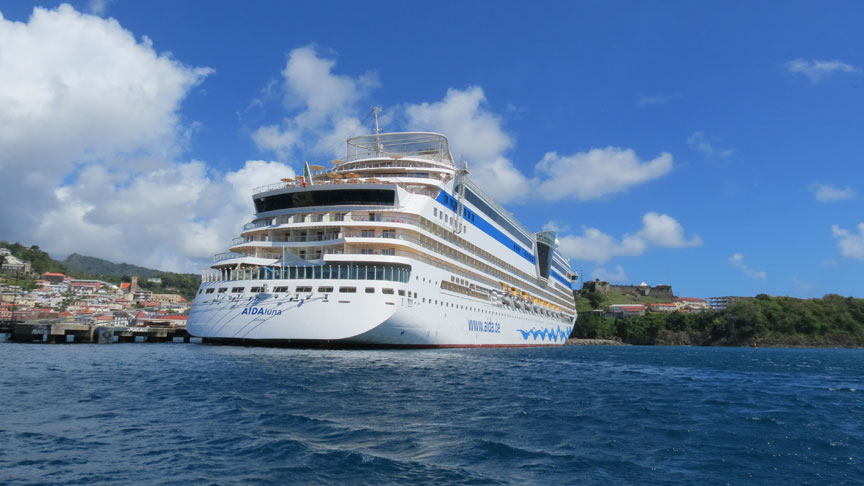
Cruise Ship leaving port
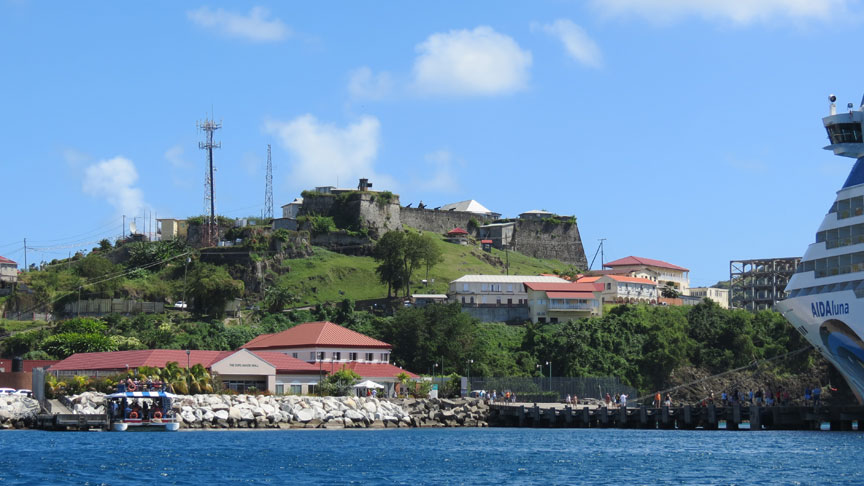
Fort Frederick

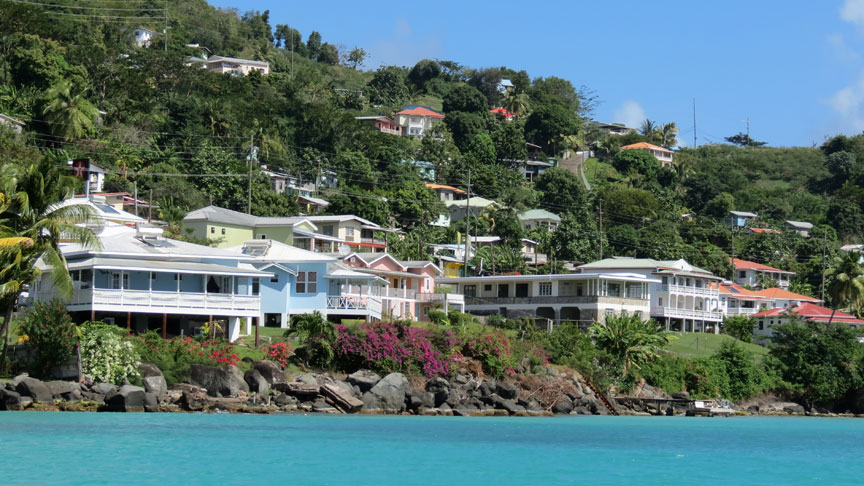
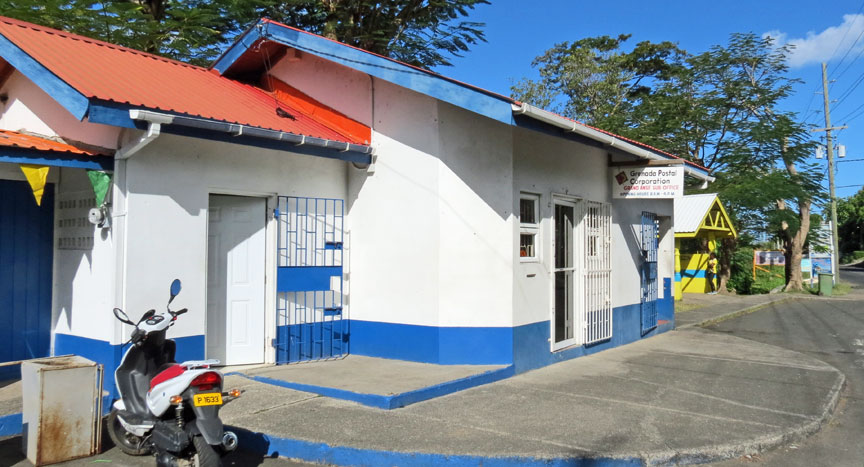
post office

cemetery
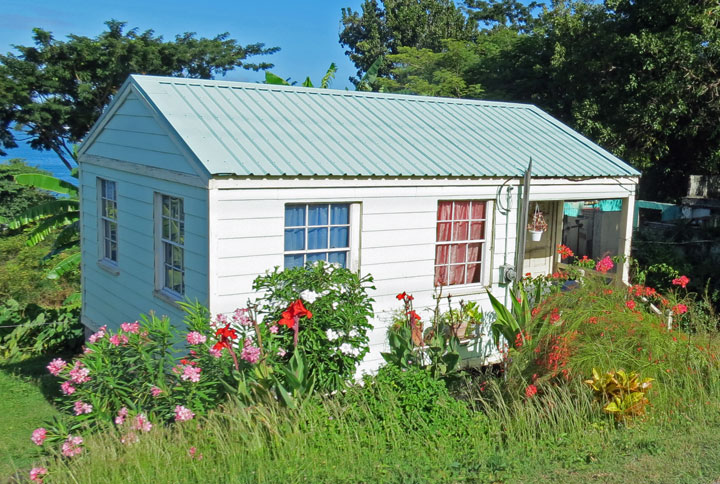
dwelling
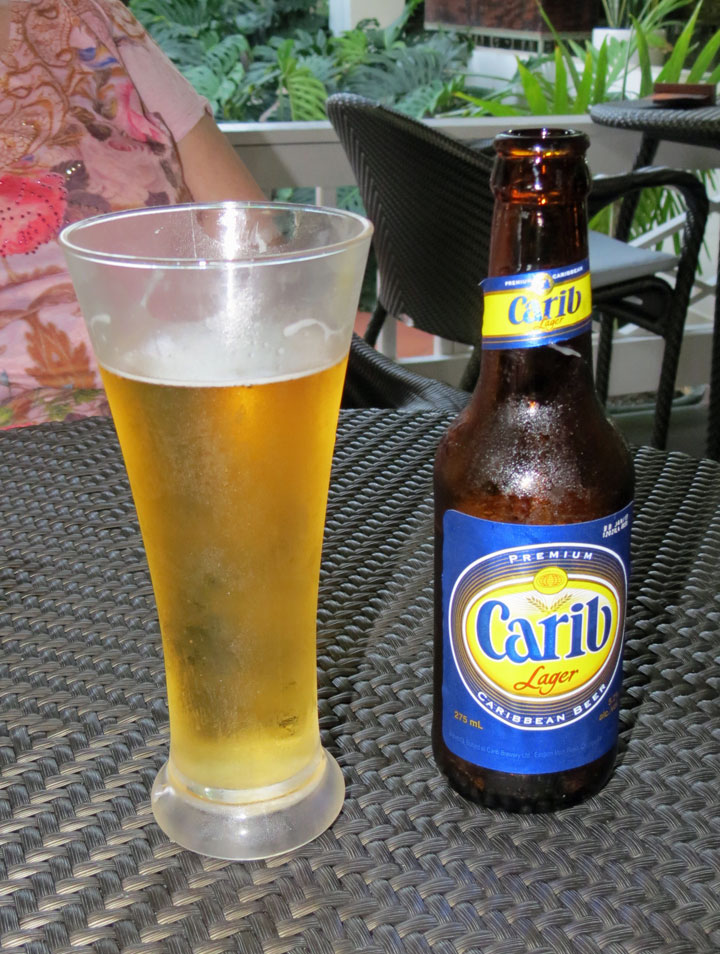
island beer